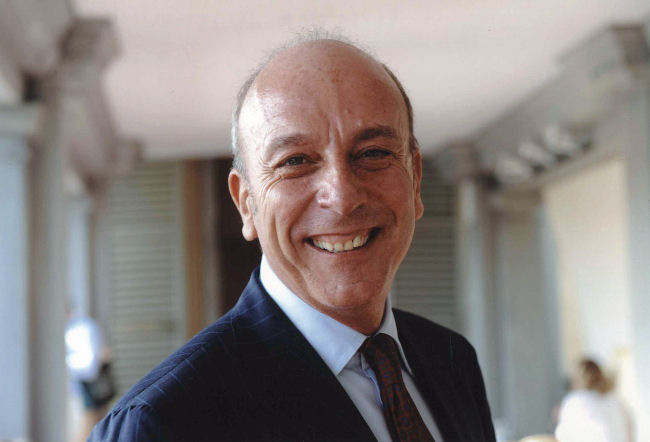

I chose Tbilisi, after Prague, because it represents those small nations at the crossroads between East and West, whose culture and civilization have been neglected for many years by the West which, for no reason at all, merged all the federated republics of the Soviet Union into a single concept known as "Russia", neglecting their specificity and their astonishing variety and diversity, reflected in the literature, music and other artistic expressions of these peoples.
Somewhat similarly to what happened with Naples, the culture of which was reduced to mere folklore and hackneyed stereotypes for years, before its importance was reassessed by numerous scholars.
I was introduced to the complex history of Georgia, and to the charm of its culture, by reading “The Eighth Life! by Nino Haratischvili, who tells the story of a family, a little like Thomas Mann in the Buddenbrooks, and reconstructs the history of his country and Europe spanning a century, with a mysterious recipe for hot chocolate as the leitmotif.
For centuries, Georgian culture, and particularly that of Tbilisi, capital of the kingdom of Georgia since the 5th century, has been a melting pot of the most varied civilizations between East and West. For many of us, the mere mention of Georgia is likely to evoke high school reminiscences of the Titan chained to the Caucasus, of the Argonauts and their journey to the mythical Colchis, of the Golden Fleece they brought back from the Colcan capital of Hague and of Medea. Reference was made constantly to both Georgian states, Colchis and Iberia, in Greco-Latin historical-literary sources and, later, in medieval European texts; more recently, however, they have been relegated to unjustified silence.
Then there are the numerous and significant historical events that link the Italian peninsula to Georgia, one of the most important points of contact between our civilisations being wine. Many Europeans are probably unaware that Georgia is the birthplace of wine. This has been confirmed by recent archaeological excavations which have brought to light grape seeds, and a clear example of this fact is that the word used to identify wine in Western languages stems from the Georgian or, as linguists say, proto-Kartvelic word γvino.
Wine, and the culture of food in general, bring the Georgian civilisation and our own very close together, united by the cult of conviviality and sharing, which become an opportunity for meeting, willingness to listen to others and hospitality, as I was able to experience first-hand on my travels in preparation for the event next October.
As for the points of contact between our cities, we need mention only two. The first is this: Naples is the city where the first chair of Georgian Language and Literature in Europe was founded, precisely at the Orientale in Naples, under the judicious guidance of the great scholar Shalva Beridze; today this chair, entrusted to prof. Gaga Shurgaia, is the only one in Italy where it is possible to graduate in Georgian Language and Literature.
As a second point of contact, I’d like to remember the figure of the Georgian footballer Khvicha Kvaratskhelia, whose contribution was essential to winning the Scudetto (Italian football championship). No less important is the fact that this young man was able to find the perfect balance between extraordinary success and the human dimension of our existence.
The architecture of the city we are going to be visiting is a mixture of local (Georgian) and Byzantine, neo-classical, art nouveau, Middle Eastern and modern-Soviet styles. Most of Tbilisi's historical buildings date back to the Russian imperial period (1801-1917). The oldest parts of the city (Kala, Abanotubani, Avlabari) were largely rebuilt on their medieval street plans. The areas of central Tbilisi, Sololaki, Rustaveli Avenue, Vera, etc., on the other hand, have a western appearance.
This synthesis of past and present is clearly reminiscent of the structure of the city of Naples, with its buildings and streets built in part on the first Greek and Latin settlements, a city where memory and future coexist, as they do in Tbilisi, where the traces of a past in some ways tragic, gradually make way for the desire to reconnect with European culture.
Generoso di Meo

Hubertus von Hohenlohe explores the cultural heritage of Georgia’s capital city, Tbilisi. Follow along as Hubertus discovers the best spots this growing international destination has to offer.
Napoli - Praga: Ori e Ombre
Napoli - Siviglia: ...Nápoles tan excelente,
por Sevilla solamente se puede dejar
Napoli - Torino: capitali si nasce
Napoli Firenze: Re-naissence
Napoli Belgrado: Il Nero e il Bianco
Napoli'den İstanbul'a
Napoli Lisbona
Due mari, una sola moltitudine
Napoli a Vienna
Guerra e Pace
Massimo Listri inside Moscow
A Grand Tour around Vesuvius
Listri inside Hamilton's Naples
MEMORIA e FUTURO
Bellotto e Listri a Varsavia
L'anima del tempo di Massimo Listri
Chiese napoletane: rovina e recuperi
icone berlinesi
di Angelo Bucarelli
Cahiers Marocains
due teatri per due sicilie
i sipari di giuseppe e gustavo mancinelli
Mise en scene a Pompei
Giustino Chemello
a "passo falso" da napoli a madrid
Guido Albi Marini
Di Meo a New York
Lello Esposito
Di Meo a Bordeaux
Ivan Theimer
Di Meo
per il "grand tour"
di Alexander Creswell
Di Meo a Capodimonte